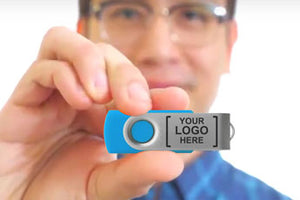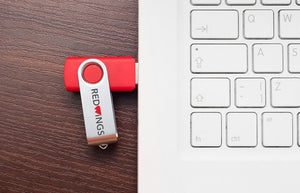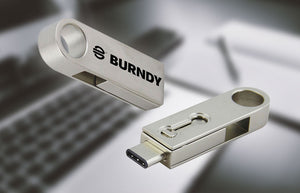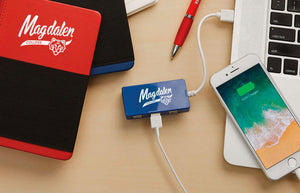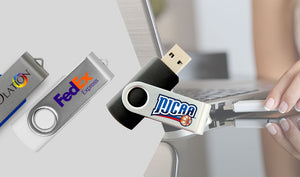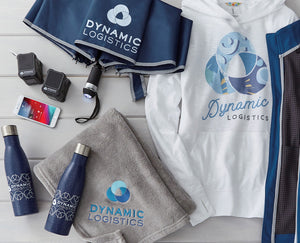What USB Flash Drive Capacity Do You Really Need?
If you are considering a promotional USB flash drive campaign, then you will certainly have a lot of options available to you. You will need to choose the model of the flash drive, how you want the device to look, and what design or designs to put on it.
Another thing you will have to consider is flash drive capacity. This is basically a measure of how much data an individual flash drive can hold. At Memory Suppliers, we offer a variety of USB flash drive sizes ranging from 64 megabytes to 256 gigabytes. Many models allow you to choose between several different thumb drive sizes, as well.
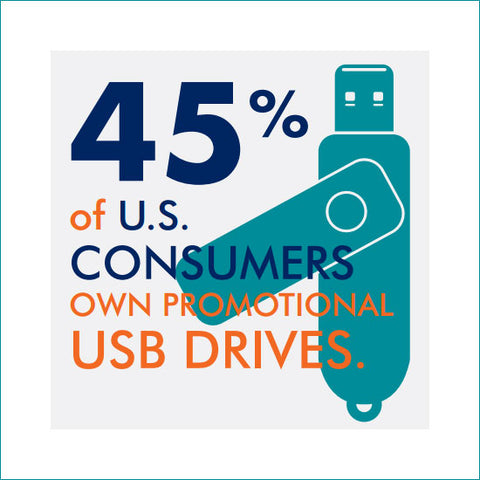
Of course, it’s hard to make a determination based on those numbers alone. For most of us, the distinction between 64 megabytes and 256 gigabytes is not immediately quantifiable without knowing how many actual files they can hold.
It may also be difficult to make a determination based on how you are planning to use the flash drives. There are as many valid reasons to opt for a lower storage capacity as there are to go with a much higher storage capacity. It really depends on your individual situation. Let’s take a look at some further information about memory stick storage capacity.
Understanding the Capacity Basics
For starters, let’s briefly discuss the difference between a megabyte (MB) and a gigabyte (GB). As you might have guessed, gigabytes are larger than megabytes. In fact, one gigabyte is equal to 1,024 megabytes.
So, on the very low end of the capacity range, we have a 64 megabyte option. A flash drive capacity that is situated sort of the in the middle would be around 1 gigabyte, which has about 16 times the storage space of the 64 megabyte model. It only gets larger from there, with a 256 gigabyte option that trounces basically all others.
So, it’s clear that there is a wide variety of flash drive sizes, but what can you expect to fit on any given flash drive?

How Much Data Can A Flash Drive Hold?
As we’ve demonstrated above, the answer to this question is wholly dependent on the flash drive’s capacity. Every flash drive can hold some amount of images, videos, audio, documents, and/or numerous other files and file types.
Megabyte Storage Capacity
Let’s first look at the “megabyte” family of storage capacities:
- 64MB – can hold approximately 40 images, 15 MP3 (audio) files, 1200 pages of Word documents, or 20 minutes of video
- 128MB – can hold approximately 80 images, 30 MP3 files, 2400 pages of Word documents, or 40 minutes of video
- 256MB – can hold approximately 160 images, 60 MP3 files, 4800 pages of Word documents, or 80 minutes of video
- 512MB – can hold approximately 320 images, 120 MP3 files, 9600 pages of Word documents, or 160 minutes of video
These can vary greatly depending on the size of the file in question. For instance, you will be able to add more images if they are only 1 megabyte apiece as opposed to 2 or 3. Likewise, you’ll be able to add fewer images if the file sizes are larger.
You may have noticed a trend with all of these capacities: they essentially double in size every time you increase storage. By that same token, the amount of files you can upload also doubles. It should also be noted that the number of specific files listed is the maximum amount of those files that can be uploaded onto a flash drive.
For example, a 512 megabyte flash drive can hold as many as 320 images. If you stock it with 320 images, however, you won’t be able to store anything else on the device. The same holds true for the amount of audio, video, and Word files.

Additional Storage Capacities
Let’s take a look at some more sizes and what they can hold:
- 1GB – can hold approximately 640 images, 240 MP3 files, 19200 pages of Word documents, or 320 minutes of video
- 2GB – can hold approximately 1280 images, 480 MP3 files, 38400 pages of Word documents, or 640 minutes of video
- 4GB – can hold approximately 2560 images, 960 MP3 files, 76800 pages of Word documents, or 1280 minutes of video
- 8GB – can hold approximately 5120 images, 1920 MP3 files, 153600 pages of Word documents, or 2560 minutes of video
- 16GB – can hold approximately 10240 images, 3840 MP3 files, 300,000+ pages of Word documents, or 5120 minutes of video
- 32GB – can hold approximately 20480 images, 7680 MP3 files, 600,000+ pages of Word documents, or 10240 minutes of video
- 64GB – can hold approximately 40960 images, 15360 MP3 files, 1.2 million+ pages of Word documents, or 20480 minutes of video
- 128GB – can hold approximately 81920 images, 30720 MP3 files, 2.4 million+ pages of Word documents, or 40960 minutes of video
- 256GB – can hold approximately 163,000+ images, 61440 MP3 files, 4.8 million+ pages of Word documents, or 81920 minutes of video
As you can see, you can store a truly astronomical amount of content on your flash drives if you want to go for higher capacity models. Not everyone wants to go that high, but it is a genuine option if you’re interested.
We should also point out that flash drives rarely actually have the full amount of space available. This is because each flash drive requires some storage capacity to run the device’s firmware. For a smaller 1 gigabyte flash drive, you can expect the firmware to take up around 72 megabytes of space. Larger models take up more space, but it is generally proportional.

What is the Ideal Flash Drive Storage Capacity?
Again, the answer to this question is entirely dependent on your needs. If you are really only looking to deliver a digital brochure with a few pictures, then you can certainly get away with a 64 or 128 megabyte option.
Of course, these flash drives are generally only usable after the fact if you transfer a lot of files between one computer and the other. They do not make for great storage devices or backups because you wouldn’t be able to add that much vital data to them. Regardless, they can still work as great promotional tools.
Higher capacity flash drives may get more usage out of them by your prospective clients. Even 1 GB or 2 GB models can provide ample storage space for them. They would be more likely to continually use the drives which also increases the likelihood of accruing more impressions.
Certain professions may benefit from even higher storage capacities. Photographers, for instance, may need 16 GB, 32 GB, or even more if they want to deliver all the pictures from an event. Wedding photographers, in particular, might want to aim high because they can include a folder of all the top photos along with a folder of all the outtakes (which can easily number into the thousands).

Architects, contractors, and real estate agents can also benefit from higher capacity models. They can include full home tour videos, pictures from any house or building they are designing or selling, and a catalog of past projects or sold properties. This is certainly more convenient than a stack of papers that would deliver the same information.
Beyond all that, a high capacity flash drive indicates your level of care. A 256 GB model can be used as an efficient backup for an individual’s computer, phone, tablet, or MP3 player. Giving out flash drives with huge amounts of storage space is a really great way to impress potential clients.
Differences between USB Flash Drive Models
There are a lot of obvious differences between flash drive models, but it’s important to recognize the key ones in regard to capacity. Not all models have the same capacity ranging from 64 megabytes to 256 gigabytes.
If you want all the storage capacity options available, then you can’t go wrong with the Classic USB Flash Drive, which features all flash drive sizes that are available at iPromo. Again, not every model has this large of a range. As an example, the Slider USB only ranges from 256 megabytes to 4 gigabytes. That still gives you a lot of options, but it’s not quite as many.
Some models, like the Tough Type-C USB Flash Drive, only have a range of relatively high storage capacities. In this case, the storage capacity ranges from 8 gigabytes to 64 gigabytes.
USB flash drive business cards, which are designed to amplify the functions of any standard business card with USB storage space, can also have a range of capacities. The Flipper USB Flash Drive, for example, stretches from 64 megabytes to 32 gigabytes. If you want it to strictly mimic a standard business card, then you can opt for the lower end capacity there.
To Sum it All Up
It is basically up to you to determine what capacity you want with your flash drive. Higher capacities can obviously hold more information and will be seen as a generous gesture by your recipients. Lower capacities, by contrast, may not hold as much data but they can still get the job done. Contact a promotions specialist if you’re interested in starting a USB flash drive campaign today.
CONTACT US
- choosing a selection results in a full page refresh
 Thanksgiving sale! Use code:
Thanksgiving sale! Use code:  Black Friday Sale! Use code:
Black Friday Sale! Use code:  Cyber Monday! Use code:
Cyber Monday! Use code:  Giving Tuesday! For every order we will donate a toy to TOYS FOR TOTS
Giving Tuesday! For every order we will donate a toy to TOYS FOR TOTS

